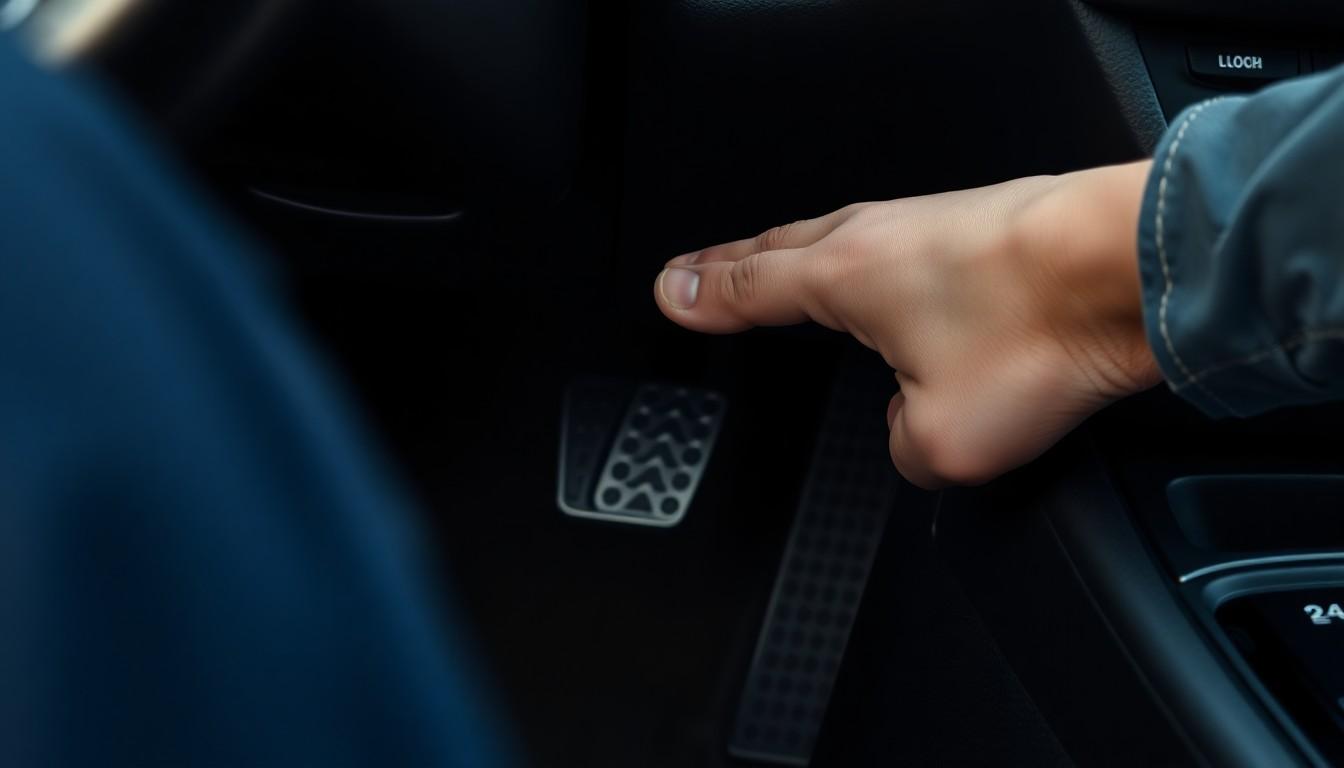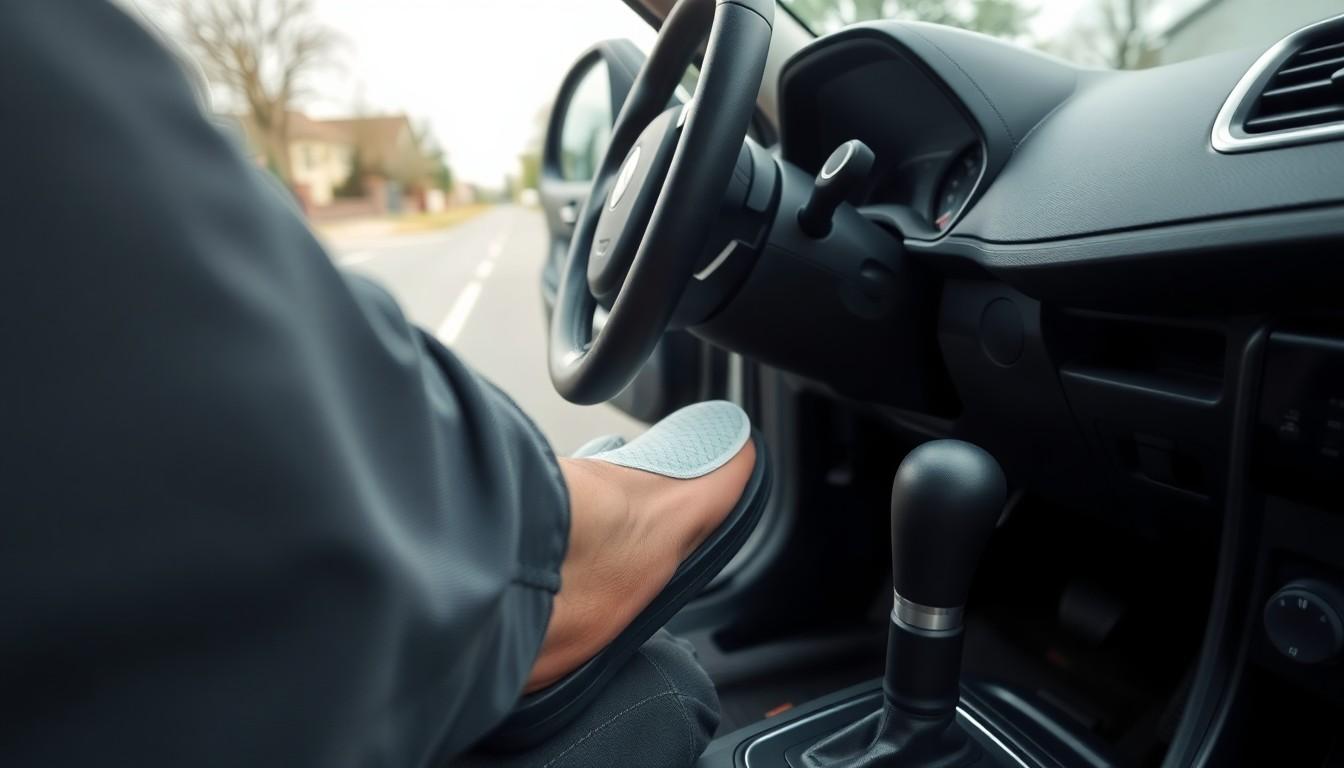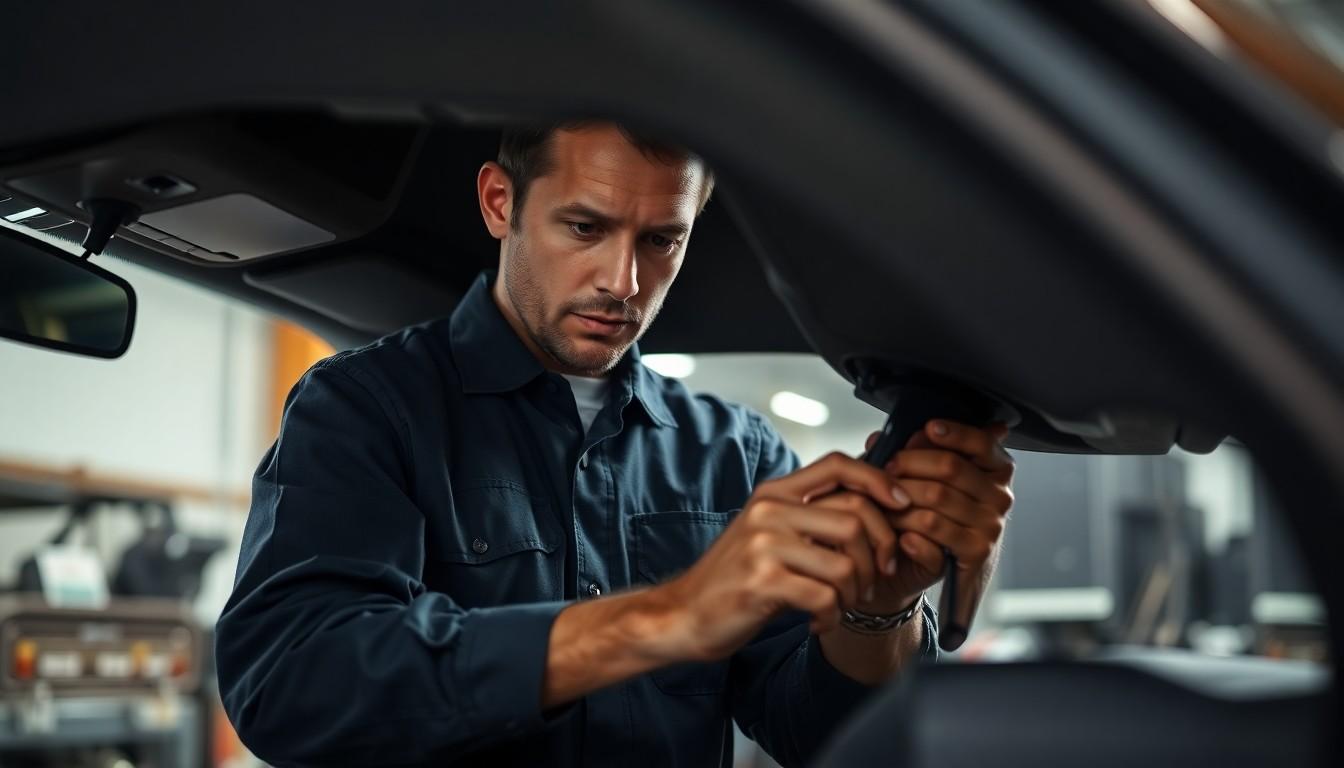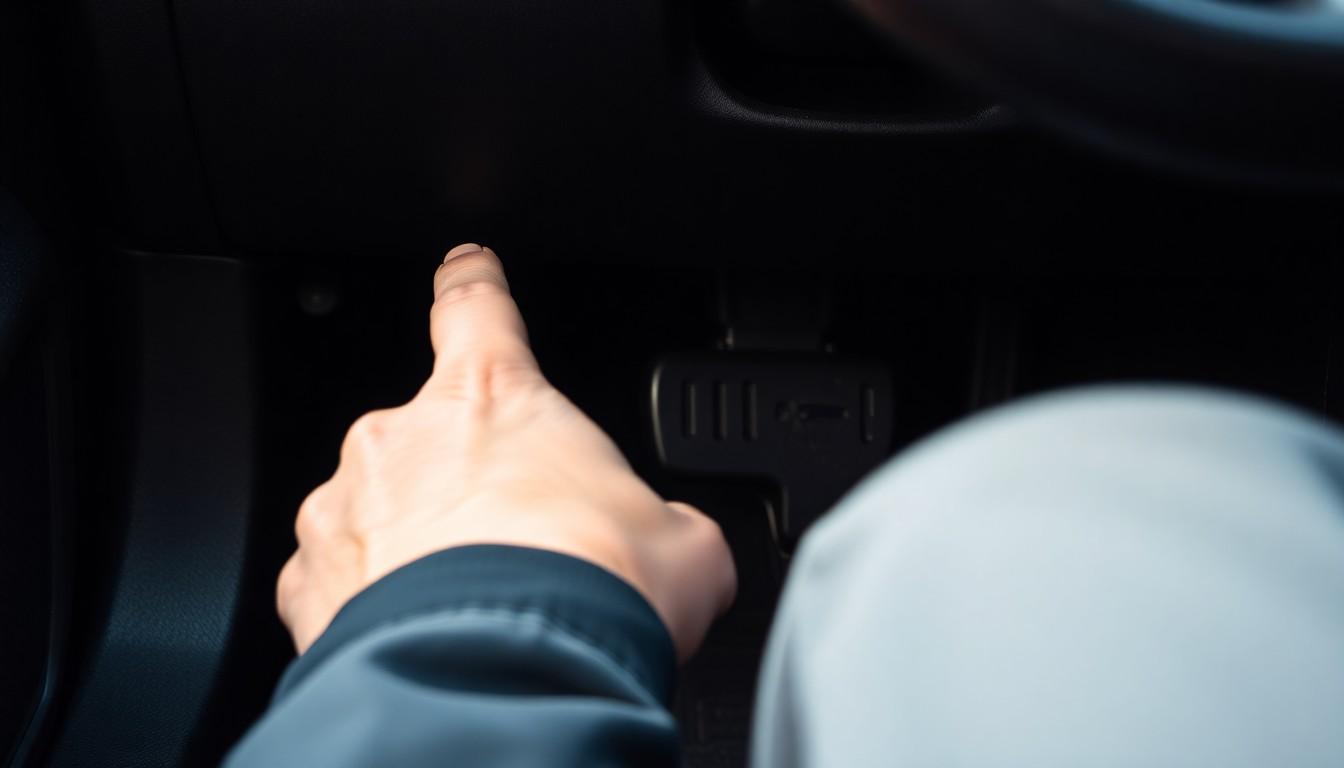Ever noticed that strange message on your dashboard telling you to “depress brake pedal”? You’re not alone. This common instruction appears in many vehicles but often leaves drivers confused about what action they should take next.
We’ve created this comprehensive guide to demystify what “depress brake pedal” really means and why it’s crucial for your vehicle’s operation. Whether you’re dealing with this message while starting your car or during exact driving situations, understanding the proper response could save you from potential mechanical issues and ensure your safety on the road.
What Does It Mean to Depress the Brake Pedal?
Depressing the brake pedal means applying downward pressure on the pedal with your foot to engage the braking system. This action activates the hydraulic brake system in your vehicle, creating pressure that transfers force to the brake components at each wheel. Many drivers encounter confusion with this terminology because “depress” sometimes suggests reducing or lowering something, but in automotive contexts, it specifically refers to pushing down on a pedal.
The amount of pressure applied to the brake pedal directly correlates to the braking force generated. Light pressure produces gentle deceleration, while firmly pressing down creates more important stopping power for emergency situations. Modern vehicles are equipped with power brake systems that multiply the force you apply, requiring less physical effort than older manual braking systems.
Certain vehicle functions specifically require you to depress the brake pedal as a safety measure. For example, shifting from park to drive, starting push-button ignition vehicles, and disengaging electronic parking brakes all necessitate brake pedal depression. These requirements prevent accidental vehicle movement and ensure the driver is actively controlling the vehicle before operation begins.
Different driving situations call for varying brake pedal techniques. Traffic driving typically involves gentle, controlled depression to maintain comfortable stops. Highway driving might require firmer, more decisive pedal pressure for higher-speed deceleration. Wet or slippery conditions demand gradual, measured brake application to prevent skidding or loss of control.
The Mechanics Behind Brake Pedal Depression

Depressing the brake pedal initiates a complex sequence of mechanical and hydraulic events that work together to slow or stop your vehicle. This system transforms the simple downward push of your foot into powerful stopping force through several integrated components.
How Hydraulic Brake Systems Work
Hydraulic brake systems convert pedal pressure into stopping power using fluid dynamics principles. When you push down on the brake pedal, it creates pressure in the master cylinder that compresses the brake fluid. This pressurized fluid travels through brake lines to each wheel’s brake components. The beauty of hydraulic systems lies in their ability to multiply force—a moderate push on the pedal generates important clamping force at the wheels. Brake fluid serves as the critical medium that transfers this pressure evenly to all four wheels, ensuring balanced braking performance. Modern vehicles use this hydraulic principle because it delivers consistent, reliable braking with relatively minimal driver effort.
The Role of Brake Boosters
Brake boosters amplify the force applied to the brake pedal, significantly reducing the effort needed to stop your vehicle. Located between the brake pedal and master cylinder, these devices typically use vacuum pressure generated by the engine to multiply braking force. Without a brake booster, you’d need to push the pedal with much greater effort—particularly noticeable in larger or heavier vehicles. Vacuum-assisted boosters draw power from engine vacuum, while hydraulic boosters use pressure from the power steering pump in some vehicles. The effectiveness of your brake booster becomes immediately apparent if it fails, as the pedal suddenly becomes extremely firm and difficult to depress. This force multiplication represents a critical safety feature that allows drivers of all strengths to apply sufficient braking pressure in emergency situations.
Common Instructions Involving Brake Pedal Depression

Brake pedal depression instructions appear across various driving scenarios and vehicle maintenance procedures. Understanding these directives ensures proper vehicle operation and maintenance of safety systems.
In Driver’s Manuals and Tests
Driver’s manuals consistently emphasize brake pedal depression as a fundamental safety procedure. Most automatic vehicles require drivers to press and hold the brake pedal before starting the engine, preventing unintentional vehicle movement. This safety feature protects against accidental starts, such as when a child might press the ignition button without understanding the consequences.
Many modern vehicles display dashboard messages like “depress brake to start engine” when drivers attempt to start without applying the brake. The vehicle’s computer system intentionally prevents the ignition circuit from captivating until it detects brake pedal pressure, serving as both a reminder and a safety interlock. Even in vehicles that don’t technically require brake depression to start, applying the brake remains recommended practice to ensure the vehicle stays stationary during startup.
During Vehicle Maintenance Procedures
Technicians frequently use brake pedal depression to diagnose and test the braking system’s functionality. Pressing the brake pedal activates a complex sequence of mechanical and hydraulic events throughout the vehicle’s braking system. The initial foot pressure triggers the brake booster, which multiplies the applied force significantly before transmitting it through the master cylinder and brake fluid to the wheel brake components.
Brake pedal feel provides valuable diagnostic information during maintenance checks. A stiff pedal might indicate air trapped in brake lines, while a spongy sensation often points to low fluid levels or potential leaks in the system. Regular maintenance checks focusing on pedal responsiveness help identify issues before they compromise stopping power. Mechanics typically assess brake pedal travel distance, resistance, and return speed as part of comprehensive vehicle safety inspections, ensuring the critical communication link between driver input and braking response remains intact and reliable.
Proper Technique for Depressing the Brake Pedal

Proper brake pedal technique combines smooth application with controlled pressure to ensure optimal vehicle stopping power. The brake pedal activates your vehicle’s entire braking system, making proper operation essential for safety on the road.
Gradual vs. Sudden Brake Application
Gradual brake application provides superior vehicle control and prevents unwanted skidding in most driving situations. Applying pressure smoothly and progressively allows your tires to maintain traction with the road surface while distributing braking force evenly across all wheels. This technique reduces wear on brake components and creates a more comfortable experience for passengers.
Sudden brake application often leads to wheel lock-up on vehicles without ABS, resulting in dangerous skids and potential loss of steering control. Emergency situations sometimes necessitate hard braking, but this should be avoided during routine driving. Vehicles handle more predictably when brakes are applied with measured, increasing pressure rather than stomping the pedal in panic.
On slippery or uneven roads, gradual braking becomes even more critical as it helps maintain stability and traction. The initial contact with the brake pedal should feel slightly firm but then soften as you apply more pressure once the vehicle is in motion.
Common Mistakes to Avoid
Tolerating a soft or spongy brake pedal indicates potentially serious system issues requiring immediate attention. This sensation often signals air in the brake lines or low brake fluid levels, both of which significantly compromise stopping power. Regular brake system inspections help prevent these dangerous conditions from developing.
Applying uneven pressure creates inconsistent braking performance that may cause your vehicle to pull sideways or enter an uncontrolled skid. Balanced, centered foot position on the pedal ensures even distribution of braking force.
Ignoring dashboard warning lights related to braking systems puts you and others at unnecessary risk. Messages like “Depress Brake To Start Engine” serve as important safety interlocks in modern vehicles with push-button ignition systems. Following these prompts properly prevents accidental vehicle movement during startup.
Resting your foot on the brake pedal while driving (“riding the brakes”) creates constant friction that overheats brake components and reduces their effectiveness. This habit also confuses drivers behind you as your brake lights remain illuminated without actual braking intention.
When Your Brake Pedal Feels Different

Your brake pedal’s feel communicates vital information about your vehicle’s braking system health. Changes in pedal resistance or responsiveness often indicate exact mechanical issues that require attention for maintaining safety on the road.
Hard Brake Pedal: Causes and Answers
A hard brake pedal creates excessive resistance when pressed, sometimes making it difficult to engage the brakes effectively. This stiffness can prevent your car from starting if you can’t depress the pedal far enough to activate the ignition circuit. Several mechanical issues contribute to a hard brake pedal, including air trapped in the brake lines, insufficient brake fluid, or problems with crucial components like the master cylinder or brake booster. These issues interrupt the normal hydraulic pressure that should transfer smoothly from your foot to the braking system. Regular maintenance checks help identify these problems before they escalate, ensuring your vehicle responds appropriately when you need to stop.
Soft or Spongy Brake Pedal: What It Means
A soft or spongy brake pedal lacks the expected resistance and may travel closer to the floor before captivating the brakes. This concerning symptom typically indicates air has infiltrated your brake lines or your brake fluid level has dropped too low. Both conditions significantly reduce your vehicle’s stopping power, creating a dangerous situation during emergency braking scenarios. The pedal’s sponginess results from compromised hydraulic pressure within the system, which normally transmits force efficiently from the pedal to your wheels. Most vehicles distribute approximately 70% of braking pressure to the front wheels, making proper pedal feel especially critical for effective stopping. Addressing these issues promptly through brake bleeding or fluid replacement restores the firm, responsive pedal feel needed for safe driving conditions.
Safety Implications of Brake Pedal Operation

Preventing Unintentional Engine Starts
Depressing the brake pedal serves as a crucial safety feature in many automatic vehicles before starting the engine. This mechanism prevents unintentional engine starts, particularly in scenarios where children might accidentally press the start button. Modern vehicles incorporate this interlock system to ensure that the driver is in position and ready to control the vehicle before it can be operated.
Ensuring Vehicle Stationary
The act of depressing the brake pedal guarantees that vehicles remain stationary during engine startup. This additional safety layer eliminates the risk of unexpected vehicle movement when captivating the ignition system. Drivers benefit from this safeguard as it prevents potential accidents or collisions that could occur if a vehicle suddenly moved forward or backward during startup.
Proper Brake Function
A properly functioning brake pedal represents an essential component for safe vehicle operation. Soft or spongy brake pedals often indicate underlying issues such as air trapped in the brake lines or insufficient brake fluid levels. These problems significantly compromise a vehicle’s stopping capability and create substantial safety risks for drivers and passengers alike.
Emergency Situations
Regular maintenance to ensure responsive brake pedals plays a vital role in maintaining reliable stopping distances during emergencies. Brake-related failures contribute significantly to vehicle accidents, making proper brake function potentially life-saving. Quick, responsive braking can mean the difference between avoiding a collision and experiencing a serious accident when unexpected obstacles appear.
Warning Signals
Various vehicles display warning indicators, including green foot warning lights, signaling that the brake pedal requires depression. Ignoring these dashboard warnings can lead to serious safety concerns if the vehicle isn’t properly secured. These warnings often indicate potential problems with the braking system that require immediate attention to maintain optimal vehicle safety and performance.
Conclusion
Understanding what “depress brake pedal” means is essential for every driver’s safety and vehicle operation. This seemingly simple action initiates a complex mechanical process that directly impacts your vehicle’s stopping ability.
Always pay attention to how your brake pedal feels under pressure. A properly functioning brake pedal should offer consistent resistance and responsive feedback. Any changes in pedal feel warrant immediate attention from a qualified technician.
Remember that proper brake pedal operation isn’t just about stopping your car—it’s a crucial safety feature that prevents accidental movement during startup and ensures you have reliable stopping power when you need it most.
By mastering proper brake pedal technique and addressing issues promptly you’ll enjoy safer driving experiences and extend the life of your braking system.
Frequently Asked Questions
What does it mean to “depress brake pedal”?
To depress the brake pedal simply means to push down on it with your foot. Despite the word “depress” sometimes causing confusion, in automotive terms it refers to applying downward pressure on the pedal to engage your vehicle’s braking system. This action activates hydraulic pressure that affects the brake components at each wheel, slowing or stopping your vehicle.
Why does my car tell me to depress the brake pedal before starting?
This is a safety feature. Modern vehicles require you to press the brake pedal before starting the engine or shifting from park to prevent accidental movement. It ensures the vehicle remains stationary during startup and confirms that a driver is actually present and in control. This interlock is especially important in push-button ignition vehicles to prevent unintended operation.
How much pressure should I apply to the brake pedal?
The appropriate pressure depends on your driving situation. Light pressure produces gentle deceleration for normal traffic, while firm pressure delivers stronger stopping power for emergencies. In wet or slippery conditions, apply gradual pressure to prevent skidding. The amount of pressure directly correlates to the braking force generated by your vehicle.
What causes a soft or spongy brake pedal?
A soft or spongy brake pedal typically indicates air in the brake lines or low brake fluid levels. Both issues reduce hydraulic pressure and compromise stopping power. Other potential causes include worn brake pads, leaking brake lines, or problems with the master cylinder. This condition should be addressed immediately as it significantly reduces your vehicle’s ability to stop safely.
What should I do if my brake pedal feels hard to press?
A hard brake pedal that offers excessive resistance might indicate mechanical issues like air trapped in the brake lines, a failing master cylinder, or problems with the brake booster. This condition makes it difficult to apply sufficient braking force, especially in emergency situations. Have your vehicle inspected by a qualified mechanic as soon as possible to ensure safe operation.
Is “riding the brakes” harmful to my vehicle?
Yes, riding the brakes (keeping your foot lightly on the brake pedal while driving) is harmful. This practice causes unnecessary wear on brake components, overheats the braking system, reduces fuel efficiency, and confuses drivers behind you as your brake lights remain on. It can also lead to brake fade – a dangerous condition where brakes lose effectiveness due to overheating.
How does a brake booster work?
A brake booster amplifies the force you apply to the brake pedal, reducing the effort needed to stop your vehicle. It uses either vacuum pressure (connected to the engine intake manifold) or hydraulic assistance to multiply your input force. This essential component enhances safety by allowing drivers to apply sufficient braking pressure with reasonable foot effort, especially important during emergency stops.
How often should I have my brakes checked?
Have your brakes inspected during every oil change (typically every 5,000-7,000 miles) or at least twice a year. More frequent checks are recommended if you notice any changes in brake performance, unusual noises when braking, or if your brake pedal feels different than normal. Regular maintenance prevents costly repairs and ensures your braking system remains reliable for emergency situations.

